INSIDE

KURT






by R.J. CIRILLO
A Boomer/ Millennial Dialogue with Armin Rosen Journalist
We are in Casita, a snug little coffee on 11th Street in Park Slope.
R.J.- Armin the first question is, walking with coffee these days, instead of taking a break and sitting down?
Armin- “I think it has to do with the American mentality of always having to be doing something productive, a function of how that mindset eliminates
The Loisaida United Neighborhood Gardens (LUNGS)
Harvest Festival has brought deserved recognition to the 52 community gardens that provide much needed green space to our dense city. LUNGS was formed in 2011 by Charles Krezell, an East Village filmmaker. He describes it as a "grassroots community gardens-based organization to unite the many volunteer-run community gardens in Loisaida, the Lower East Side and the East Village. LUNGS works to promote, protect and preserve gardening and greening through cooperation, coordination and communication. We believe that permanent community gardens and public greenspaces are necessary for a healthy New York."
Many of these gardens came out of the 1970's burning of the East Village, when tenements were burned by the building owners because they were worth more as insurance claims than they were as living spaces.
These days the gardens are often at risk because of the much greater value of city land. Just recently, the Adams administration issued Administration Order 43, which directs City agencies to evaluate all property controlled by the city to see where new housing can be built. This is of course a threat to many of these gardens.
In fact, these gardens have helped turn the decaying and bankrupt NYC of the 1970's into the desirable neighborhoods of today.
Gardeners had to organize once before, back in 1999, when Mayor Gi-
spaces dedicated to sitting around and frittering away time. It’s a very European thing to sit and watch the world go by, letting your mind wander, not so much here in the last few decades. It’s a kind of a luxury that belongs to people who can hang around Park Slope for a living, which is what I do.
R.J.- “OK, what do you do for a living?”
Armin- I’m a writer for a small magazine called THE TABLET. I also do freelance work when the opportunity arises.
R.J.- What is your feeling regarding the Boomer vs Millennial thing?
Armin- Yes, I’d have to say the term “Boomer” has become a catch-all phrase
by George Fiala

uliani tried to auction them all off to real estate developers. The Washington Post wrote about this in their May 12, 1999 edition:
"Now Giuliani is taking on the city's estimated 20,000 community gardeners, many of whom subscribe to the kind of flower-power '60s liberalism that drives him batty. The gardeners have held colorful protests, dressing up like sunflowers and tomatoes for civil disobedience rallies, and a support group called the Green Guerrillas will try to stop the auction in court Wednesday.
But with one exception — a garden in swank Park Slope — Giuliani has refused to budge. He rejected an offer by a nonprofit land trust to buy all the gardens on the auction block for $2 million. He has never
meaning “You’re too old to matter!”
R.J.- Exactly! (We both laugh)
Armin- it’s now just a purely ageist word with no real relativity to anything.
R.J.- But people running the world seem to be Boomers.
Armin- That’s true, they’ve had a real run, it kind of makes sense, they’re the product of a demographic boom, so they have the numbers, a big numerical advantage. Also their connection to the most mythologized period in American history, the sixties.
R.J.- Yes, we had the sixties which was a huge cultural upheaval that still resonates and defines the boomer generation. So if
even bothered to explain why the city is selling gardens when it owns more than 10,000 other vacant lots no one would miss."
Green activism eventually saved most of the gardens, and having LUNGS now is a great resource that helps keep government in check and protects these creative green spaces that allow city residents, most of whom cannot afford summer homes, a chance to garden, providing a little bit of nature in the city. As well as serenity.
The annual Harvest Arts Festival is a great showcase. This year's festival, which ran from September 20-29, consisted of free activities at dozens of East Village/LES community gardens. Each garden featured various performances, concerts, workshops, and other cultural performances. Events included a Celtic and British
(continued on page 5)

you had to answer a question regarding (continued on page 21)
rEPortErs
FEaturEs
CulturE
ovErsEas
insights
musiC
Jazz
Film
books
WEbmastEr
dEsign



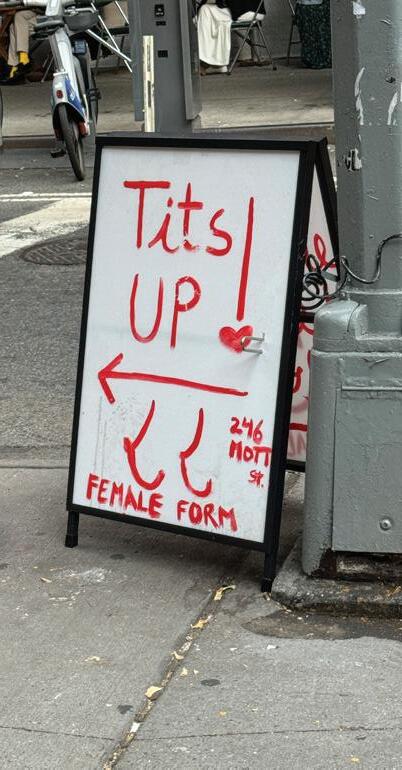

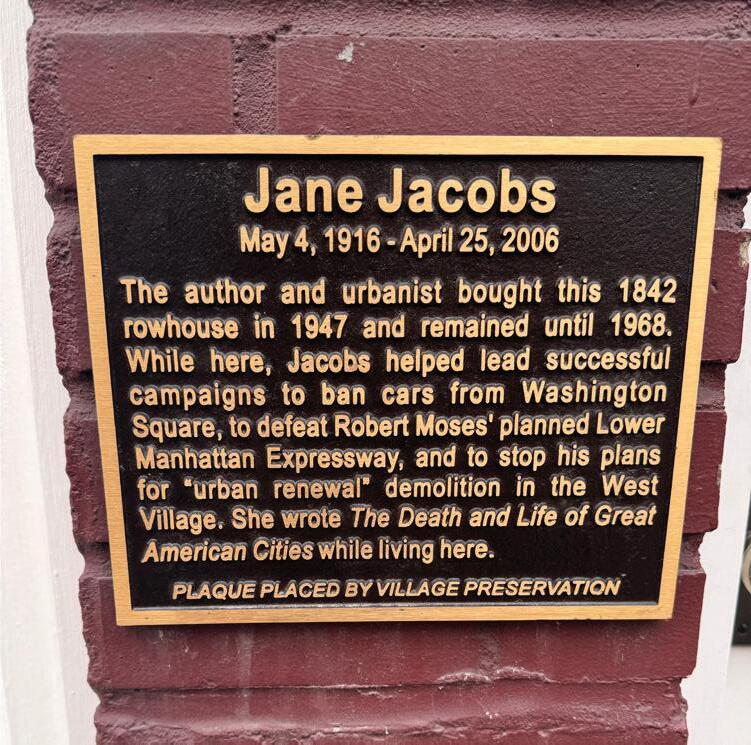






My name is George Fiala and for the past 14 years I've been publishing a monthly community newspaper in Red Hook, Brooklyn.
But when I came back from college back in 1978, my first job was with the Villager (see the masthead to the right), where I spent the next five years. My boss was Mike Armstrong, founder of the Brooklyn Phoenix newspaper. He purchased the Villager the year before, but spent most of his time in Brooklyn, leaving me in charge here in our office near Sheridan Square, which had been the headquarters of Carmine DeSapio. I spent another five years at the Phoenix. In 1987 I started a mailing company, and in 2010 I finally got back into newspapers, founding the Red Hook Star-Revue
I'm excited to be back in the Village, and I hope is that I can bring back a little of the old Villager, which was real community journalism. In my day, the big issues included loft legalization, off-Broadway theater, St. Vincent's Hospital, Bill Passanante, Carter Burden and Carole Greitzer, not to mention the Village's own Ed Koch; NYU's expansion and Evelyn Patterson; Gilbert DiLucia and the Greenwich Village Chamber of Commerce; the Village Nursing Home; the AIDS crisis; George Segal's Gay Statues in Christopher Park; the first years of Ralph Lee's Halloween Parade (I dressed up as a pencil in 1979) and more. I'm looking forward to attract readers
and writers that will make our pages a forum for not only news from the community boards, police precincts,. PTA's and City Council; reviews of the great music, food and arts that define our part of the world, but wants and needs and opinions of those who live here.
I plan to earn the support readers and advertisers, and I thank you for your curiosity about this new publication.
It seems that there is a possibility that our 45th president might become the 47th, as hard as that is for many of us to believe. One might wonder how the country could survive another four years of Trump. To be honest, I didn't think we would make it the first time, and while it seems people's memories are short, we almost didn't. I was just one of many who checked COVID death rates daily, both locally and nationally. As he does with everything, Trump turned this health emergency into a political opportunity, and I'm sure tens of thousands of people who should be alive died as a result.
I'm guessing that things would be worse if there was a next time – especially as he would only hire unprofessional loyalists to fill ALL the ranks of government.
But we would not be alone. I can only imagine what it must be like living under Putin, North Korea under Kim Jong Un, Afghanistan under the Tali-

ban, or even Israel under Netanyahu. Students of history know of much worse – the Nazis, the Spanish Inquisitors, the Roman Empire – to name just a few authoritarian governments that terrorized their populations. And yet humans survive. But unfortunately don't always learn. I remember thinking that at least one benefit of the Bush/Gore election fiasco would be that the country would see how bad things would be with the dumb policies of George W. Things did get bad – the excesses of the war on terror, boosting of fossil fuels despite evidence of climate change, increasing federal deficits
due to lowering tax on the wealthy and corporations, the Iraq War – a war that we chose to fight against non-existent weapons of mass destruction resulting in tremendous number of dead innocent Iraqis and American soldiers.
Despite all this - he was re-elected. It was only the financial crash of 2007/2008 that gave us Barack Obama, and despite the Tea Party, he even got a second term.
I would love to see Harris get a shot at being a leader I could be proud of. When all is said and done, having a leader that we all can be proud of is what patriotism is really all about.
BY STAR-REVUE STAFF
The Landmarks Committee held a public forum concerning the demolition of the Dapolito Center on September 30. This meeting followed the approval of a resolution opposing the demolition by the Board at its September meeting.
The announced program for the meeting was to have a presentation on the history of the Center, a presentation by the Landmarks Commission of rules covering demolition of a contributing building in a Landmark Dis-
trict and demolition by neglect, and a presentation by the Parks Commission concerning the proposed demolition of the center. This was to be followed by testimony from the public with preference given to people from the neighborhood.
The history was reviewed by Dena Tasse-Winter from Village Preservation as scheduled.
The Landmarks Commission did not respond to the invitation. Susan Gammie read a summary of landmarks regulations concerning demolition of a building of historic and architectural worth in a landmarked district and demolition by neglect. This covered the same territory that would have come from a Commission representative.
The Parks Commission elected not to send a representative and Susan read a letter from the Commission saying that the question, especially the structural condition of the building, was still under study and review. They anticipate having a more information by the end of the year.

The public did not disappoint in fulfilling its part of the meeting. There was testimony from 20 members of the public, most of whom live in the neighborhood and 2 former residents. They ranged from a 4th generation woman from an Italian family through later arrivals with only two or three generations in residence to those who had arrived late-

ly to begin professional work in New York.
There was an instance of a man who had used the pool in his therapy for Parkinson’s Disease and a young man who had grown up on Morton Street and who spoke movingly about how the Center had formed his life, ultimately inspiring him in adulthood to become teacher and life coach for young people. He concluded with a plea – “Save my childhood home.”.
We have a clear picture of the views of the public concerning the Dapolito Center through testimony that went well beyond the range of comments for a usual Landmarks Committee hearing. Landmarks regulations do not include the use of the building or interiors except those individually designated. With the purpose of the meeting to provide information to the public and hear their views, the public fulfilled its part.
It requires no divination to know that the members of the community want the Dapolitio Center campus to be restored and the programs that they love so much returned. No one complained that the pool was unsuited to Olympic Competition or that the NBA may find the court wanting. There was scant mention of the recreation facilities proposed for the affordable housing building on the adjacent water tunnel site. Those who spoke about this said that they did not want it to take the place of the center that they know and love.
The testimony was without exception passionately in favor of restoring the building and preserving the facilities and the full program’s remaining in it are a vital and necessary part of the community. This includes the building, the Keith Haring Mural, and the outdoor swimming pool as a campus. There is no separation of building and use in the minds of those who spoke.
It is one thing – a community recreation center – the building and the programs indivisible – and they want their building and their programs back – and soon.
The Department of Sanitation is advising property owners and managers that beginning November 12, 2024, all trash must be set out in a bin (55 gallons or less) with a secure lid. This Rule will apply to:
• Single-family homes
• Two-family homes
• Buildings with up to 9 apartments
Initially you may use a compliant bin (55 gallons or less with a secure lid) that you already have, but starting June 2026, you MUST use an Official NYC Bin.
Hudson Park Library is now open as a Grab and Go location! Patrons can start placing their holds by calling the branch at 212-243-6876 or logging into their account on nypl.org and choosing “Hudson Park” as their pick-up location. Their grab-and-go service allows patrons to pickup and return materials while safely maintaining distance from others. The process is contactless: Once your items are ready for pickup, they will immediately be checked out to your account. This way, all you have to do when you get to the library is grab your items from the holds shelf—then go! There is no need to stop by the circulation desk for checkout. The same goes for returns— rather than visiting the desk, there will be a designated bin where you can return any items you currently have.
The new hours are: Monday: 116; Tuesday: 11-6; Wednesday: 12-7: Thursday: 11-6; Friday: 11-5; Saturday: 11-5; Sunday: Closed.

(continued from page 1)
folk music concert at La Plaza Cultural, 9th Street and Avenue C. After the folk music, performed by Avon Faire, African jazz was presented by a group called "Source, with Andoulaye Diabate."
The De Colores Community Yard & Cultural Center, at 313 East 8th Street (between B & C) presented a full day of music on the first Saturday. The Jack Hardy Songwriters Exchange presented some of today's finest folk musicians, including Jane Byaela, Mark Aaron James, Maya Bern and Paul Sachs — a veritable free folk festival in
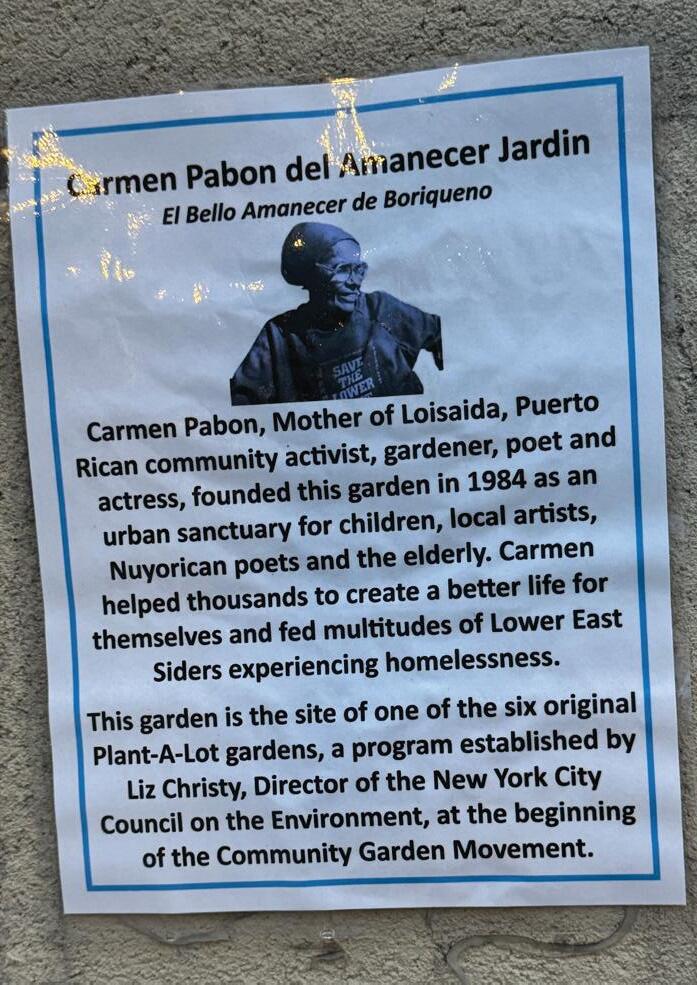
the park.
Jack Hardy, who the festival was named after, was a major Greenwich Village folk musician, who among many other things, established the Fast Folk Musical magazine - a magazine that included a record album featuring some of the earliest performances of artists such as Suzanne Vega, Shawn Colvin, Richard Shindell and Tracy Chapman.
The ten days Harvest Festival included lots of music, but also books, photography, visual arts, poetry, theater and film. As well as a discussion of
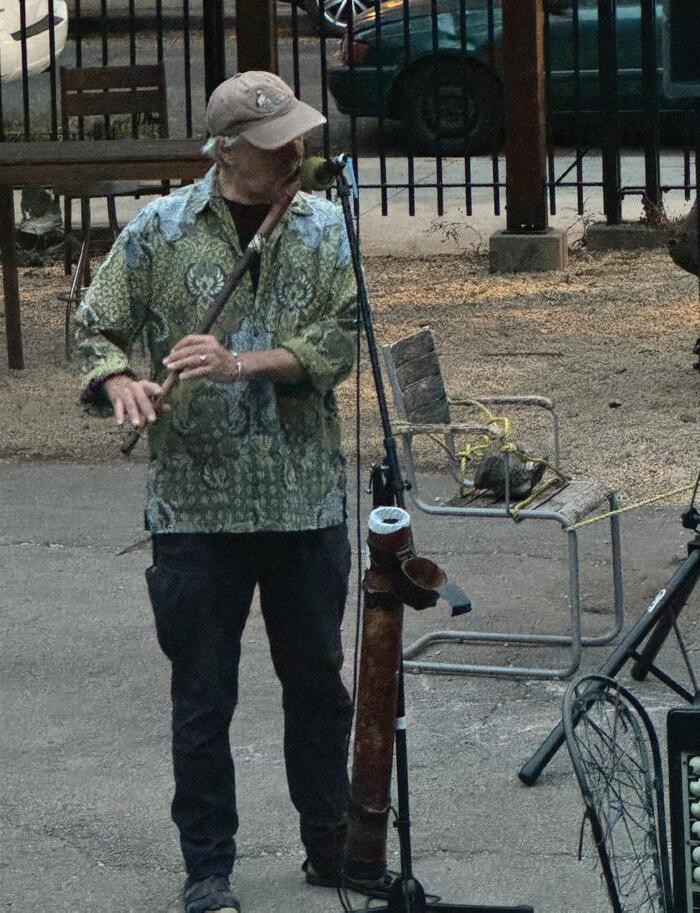
Mayor Adams' Executive Order 43.
The event that I was able to attend was a showing of a film about the work of Sylvain Leroux, a flutist from New York by way of Montreal who spent some time in Conakry, Guinea, a city in Africa, studying traditional African flute. At the time, which was 1995, his teacher suggested he start a music school there.
While it was not something he thought possible at the time, the idea stayed with him as he progressed in the jazz
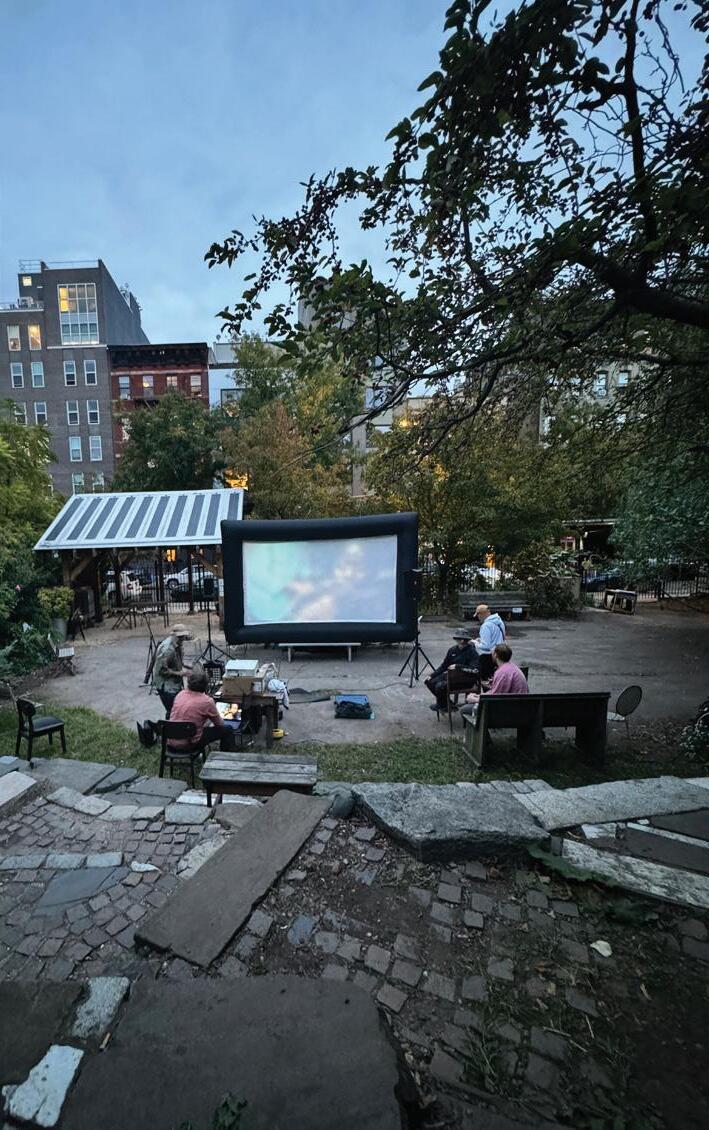

and African music scene, the thought didn't leave him.
He musical success grew and in 2013 he returned to Guinea to help found a school to teach youngsters traditional music. This was after he realized that by adding three extra holes to the Fula Flute, which is what he studied, he created something that could be taught to kids.
With the help of friends, he began the school, recruiting street kids in Guinea, many of whom were not receiving any sort of formal education. He taught them to read music and to play not only the flute, but percussion and other instruments.
The success of this project was filmed and both the filmmaker and Sylvain himself were present at La Plaza Cul-

tural that evening. I sat on a stone slab atop a hill, with a pretty large outdoor screen set up, ready to play the move at dusk. Beforehand, Sylvain played some traditional flute solos.
I'm only sorry that I wasn't able to attend more of the LUNG events, my problem was that these ten days were at the intersection of two annual newspaper conventions I attend. Hopefully by next year there will be more Star-Revue writers to document
for a little bit, and being a drummer, focused on what seemed to me a great drummer. I followed the band as they moved west, finally ending up at Astor Place, where they played a couple of songs to their biggest audience.
They highlighted their drummer, who tuned out to be Chad Smith, which a quick search on my phone told me was, among other things, the drummer for the Red Hot Chili Peppers.
The band on the truck was Outernational, and they were promoting an upcoming gig at Bleecker Street's Le Poisson Rouge. Here is a little about the band from their website:
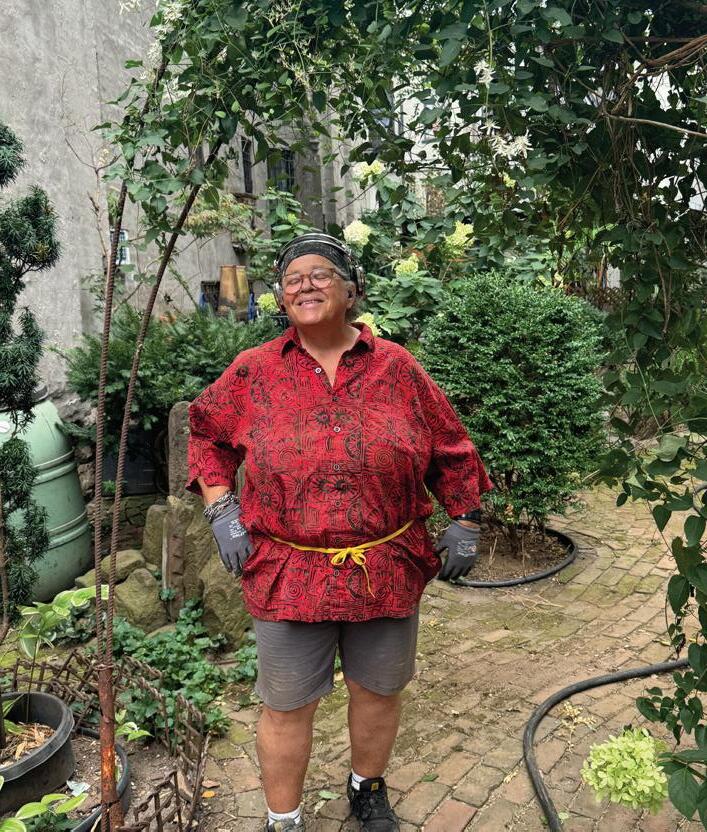
this amazing event.
By the way, LUNGS offers a weekly CSA. It is a pay-as-you-go program that offers weekly fresh produce without having to purchase a seasonal share, as is common at other CSA's. The cost is $13, and that provides a bagful of healthy fresh produce, available only when you want it. The program runs through Thanksgiving. Sign up at CSA@LUNGSNYC.ORG


laborators, Miles Solay and Jesse Williams, NYC/Bogotá-based Outernational makes “future rock” music for the fighters and dreamers, the dancers and poets, the lovers and thinkers and all those who yearn for another way for humanity. With fire and fury and total impatience for the way the world is, September 18th, 2024 will see the release of the Outernational album, Welcome To The Revolution, a manifesto of a person’s lifelong mission to give their whole life and every fiber of their being to the struggle to change the world. All those with humanity in their heart are welcome… to the Revolution.
by George Fiala
On a quiet early autumn walk on 11th Street in the East Village, the pounding of drums starting getting louder
and louder. At first, it seemed like a car had boom-box speakers turned way up, but as I turned the corner onto Avenue A, I saw a full band atop a flatbed truck with a crowd of people listening and taking pictures. I listened
Led by vocalist and producer, Miles Solay, Outernational is a revolutionary band whose mission of creating music and art to provoke, challenge and inspire has developed into a powerful body of work. With collaborators including Chad Smith, Residente, Tom Morello, Shekib Mosadeq, Bob Avakian, and more, Outernational’s art is a declaration of defiance and hope against a whole soul-crushing way people are forced to live all over the world. Founded by longtime col-

by Giovanni M. Ravalli
Back in 2019, before COVID, there was this looming feeling of something impending. Not knowing exactly what it was, only that it was going to impact the economy for better or worse. Erring on the side of caution, I planned for the worst and hoped for the best.
My mom had just lost her battle with a rare cancer in November 2018. She named me and my brother as beneficiaries on an annuity which she had started for tax purposes and retirement. I used my half to buy an RV at the one year mark of her passing.
My 2020 resolution was to live life on my terms as best as possible because her death opened my eyes to the reality that I too will cease to exist one day and don’t want to regret the things I hadn’t tried.
I moved into the RV on January 24, 2020. This was the coldest night of my life. Being under the impression that I could sleep the way I had in my small one bedroom apartment that never had much heat, I recall waking up in the early morning hours in a fetal position so cold that I couldn’t even bring myself to get up for another blanket. I learned quickly to bundle up in layers and use more than one blanket in cold temperatures. Winter became easier as I eventually invested in a propane buddy heater. In the summer I use a portable air conditioner powered by my gas generator which also charges my e-scooter, portable battery for my hanging four
watt Christmas lights and to keep my phone and laptop charged.
I found myself lacking all the modern conveniences which I had previously taken for granted—running water being one. This leads to one of the common questions I get: “how do you shower?” which happens to be the simplest question to answer. The gym. The other common question I get is where do I park my 28 foot apartment on wheels. We all know parking in NYC is atrocious. I personally have found that industrial zones where oversized commercial vehicles like charter buses, trucks and school buses are frequently parked overnight is a safe bet. So long as the alternate side parking rules are followed and no disturbance or mess is caused, we are generally left alone.
I started out parked on the side of a cemetery for about a year, then I found myself under the Gowanus expressway in South Slope, and now in this beautiful neighborhood of Red Hook. Over the years I adopted a dog, found another dog abandoned in the Washington Square Park dog run and suddenly became a twice blessed dog dad to the best dogs ever, Apollo and Onyx. “Do you cook?” Yes, but nothing heavy because smaller spaces get cluttered quickly and I’m not one for the cleanup. I have a setup for outdoor cooking where I use a cinder block as a rocket stove fueled with sticks I grab from the park while walking the pooches. My indoor setup consists of a folding rocket stove which is fueled by two, or three, sternos.
Water comes from a fire hydrant. On water day, I bring my monkey wrench, my two large water containers, two
buckets and a gallon jug. It’s the same water pumped through apartments and houses. I use the buckets for cleaning, usually to rinse my cookware after sudsing and scrubbing but also for various other cleaning needs like mopping. For a single man with two dogs, as well as being a full time college student, the lifestyle isn’t so bad. For me it had come down to being constrained by student loans, high rent and utilities I barely ever used because I was never home. I was working three jobs just to pay for all of that, with nothing but a place to crash and shower with rules on how I was allowed to live. Imagine that, working your ass off to pay a landlord for the ability to live in a space, but no pets, no washer and dryer, no guests for longer than three consecutive nights, etc. I felt like I had no autonomy over myself let alone the life I was living. So here I am now, a motor home owner with the dogs I always wanted, the ability to have guests, and the autonomy which was lacking for so long. It’s true that I don’t pay rent, but there are overhead expenses and hidden costs which do add up. However, being in more control of those expenses is worth the added freedom acquired. I kept working three jobs throughout the pandemic and saved a lot more than originally expected, but then inflation took it all away and left me with even more credit card debt than ever before. Going back to school for a second degree was not only a beckoning choice but also out of necessity. I couldn’t afford my student loan payments anyway so it made sense at that point to double down, follow my dreams and get a second, more use-




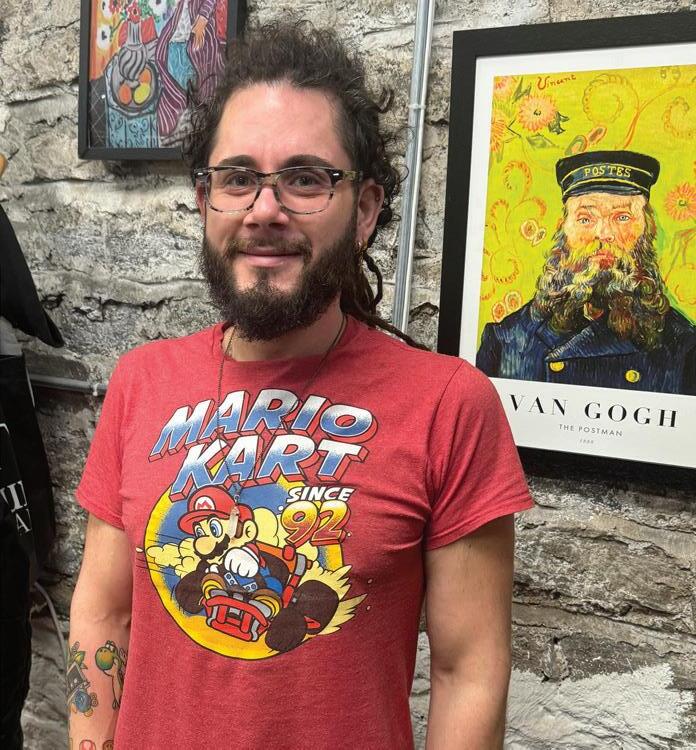
ful degree in fields which excite me: Communications, Visual and Media Studies with two minors Journalism and Film Production.
In order to create this life, I had to first break out of the 9-5 cubicle prison of monotony and mindless clickity clack. Living paycheck to paycheck is not living, it’s surviving. It got to a point for me where my time and autonomy became worth more than an employer who didn’t care about my wellbeing.
It started to feel like I would rather go hungry than put up with the rigid senseless rules and slavery to the matrix we tolerate. So I took a leap of faith, became a broke college student again and live day to day.
It really comes down to perspective. One could say I’m homeless, but to me home is where the heart and soul are found. Looking at it that way flips the script onto those following the herd into the abyss. Of course I don’t live in a brick and mortar home, but I’m still sheltered, fed and most importantly aligned within.



by Kelsey Sobel
My first teaching job was at a Jewish day school in Brooklyn. I quickly learned I was not cut out to be a sixth grade teacher (students swallowing pennies during class just wasn’t for me) and set my sights on becoming a high school teacher.
I also learned it was generally more advantageous to work at a public school, (better pay raises, job security and benefits) so I set about actualizing that reality. If I rewind further back to graduate school, my original ambition was to be a writer. After realizing, during my three year program, that this ambition was truly the definition of a pipe dream in terms of securing health care or buying a home, I decided becoming a professor would be the next best thing.
This too became a Herculean effort, tied directly to my ability to publish a piece of work that rocketed me into writerly fame. If you know you know how difficult it is to break into higher education in 2024. In my group of graduate school friends, only one has managed to achieve a tenure track position, after ten long years of endless applications, interviews and rejections. Long story short, by the time I’d graduated from my MFA program, being a teacher didn’t seem so bad. Two years into teaching middle school, I secured my first public high school teaching job. I felt I’d truly achieved something in my career. I felt I was moving forward. Next up came my teaching certification. Generally speaking this wasn’t an issue as I only had to take a small amount of classes to meet the requirements of becoming a certified English teacher. What was an issue was pass-
ing my math praxis. If you’re someone who started struggling with math in first grade, and then spent most of high school cheating or skipping class altogether, a timed test consisting of every type of basic math seemed nearly impossible. The first time I blindly took the test I received 110 points. To pass, you need a minimum of 150. But I was determined.
An angel of a co-worker took me under her wing, quickly determining that my mathematical deficits were so extreme that we needed to go back to basics. I spent many Saturdays learning place value. But as painful and frustrating as the process to pass the math praxis was (just ask my husband, there were some dark days of adding and subtracting fractions) I was also humbled and inspired by the experience. Through my deeply personal struggle with math, I was reminded by how tasks and achievements vary exponentially in difficulty from person to person. I developed a new sense of empathy for my students and their academic struggles. Many of my teacher friends didn’t study for the math praxis and passed the exam with flying colors. It took me three attempts and a year to pass.
But in the end, regardless of the arduous journey, I was certified to teach grades 5-12 in New Hampshire. I had achieved my goal. So, what next? Even though education doesn’t necessarily encourage ambition, I’ve never found a way to turn my ambition off. After three years teaching at a small, progressive, and remote school in a poor area, my husband and I relocated to a more populous area where I was offered 10k more in salary. Again, this
" I’ve never found a way to turn my ambition off."
move felt like a forward step in my career path. But after 1.5 more years in the classroom, teaching started to feel redundant. I felt I was stagnating. I wanted something more. But what? As an educator, I’ve found it isn’t necessarily normal to speak to coworkers about dissatisfaction in the workplace, specifically in the classroom. Many teachers settle in for the long haul - not only because of their pure and genuine love of teaching, but also due to the reasonable schedule, mostly excellent health care and of course, pension and retirement. My options for next steps were mostly limited to administrative positions which would require more coursework, time, and no guarantee of a position.
The question is: how can educators be ambitious? How can educators continue to grow and develop as the years go by? In the American educational system, what structures can we provide to help nurture growth and development? It can feel, as an educator, that your growth is limited to becoming a better teacher. And how do we quantify what makes teachers excellent? At a certain point I felt I was creating all of my materials on my own - working in isolation without the benefit of collaboration or shared intellectual ideas. I didn’t feel inspired or challenged. Looking at transitioning out of teaching is also a scary prospect due to the specific set of skills
educators possess. It can be hard to convince someone you’d be good at event planning when one of your top skills is “grading essays” or “classroom management.” Another barrier can be finding a supportive networkperhaps not limited to educators who have ambition, but those who have made it out of the classroom and into other careers. I don’t think it’s unreasonable to assume that with more focus on forward momentum and opportunity, more young people might consider roles in education.
After many applications, I did eventually take a role with an educational nonprofit that requires a more diverse set of skills. The most significant part of the role is that I’m not confined to a classroom. Much of the role requires creativity, flexibility and community outreach. Despite this, I can’t quite tell if I’ve taken a forward or lateral step in my career. What comes next?
As my husband gently reminds me, I have about thirty years of work ahead of me, so it isn’t as if I’m in any particular rush.
But the question remains, what can an ambitious educator do? I often find myself wishing I cared less about goals and achievements in the workplace. When I was younger my goals felt so clear cut but at this point, in my mid thirties, they feel more nuanced. Americans value ambition. I’m not sure I’ll ever arrive at a moment when I sigh and say to myself: I’ve made it. But I do know I’ll continue trying. In the words of President Eisenhower: “Accomplishment will prove to be a journey, not a destination.”

The 62nd New York Film Festival kicked off September 27 with Nickel Boys, RaMell Ross’ adaptation of Colson Whitehead’s Pulitzer Prize-winning 2019 novel. What followed on the main slate was one heavy hitter after another: U.S. premieres of The Room Next Door, Spanish auteur Pedro Almodóvar’s latest, Brady Corbet’s Oscar frontrunner The Brutalist, Paul Schrader’s Oh, Canada, and Hard Truths, a new film directed by Mike Leigh starring the incomparable Marianne Jean-Baptiste; the North American premiere of Oscar-winner Steve McQueen’s World War 2 drama Blitz; director Sean Baker’s Palme d’Or winner Anora
Even more big guns are found in the Spotlight section: the U.S. premieres of Luca Guadagnino’s Queer, which could earn star and former Bond Daniel Craig a Best Actor Oscar nomination, and new films by Leos Carax (It’s Not Me) and Walter Salles (I’m Still Here); Cannes-favorite musical Emilia Pérez; a new film co-directed by the singular Guy Maddin, Rumours; some new bits and bobs from Jean-Luc Godard (RIP).
All sure to be crowd pleasers — and many destined for New York art houses and multiplexes before the year is out. Which is why my festival card is filled by more off-path stuff, like what’s in the Currents lineup. Here you can find interesting new voices and out-there films, plus four programs of shorts, which are always worth a deeper look. It’s the more experimental side of the festival — or, at least, the most indie. It’s where you go to be challenged and surprised.
A meditation on history
One film that did just that was Fire of Wind, the debut feature from Portuguese filmmaker Marta Mateus. In a brisk 72 minutes, Mateus conjures a meditation on Portugal’s authoritarian past and exploitative present where time, experience, and memory are fluid and overlapping. By turns stark and dreamy, the film is so laden with symbolism that those not immersed in Portuguese history need a cheat sheet. But we’re never too at sea. The images are so beautiful, the faces so recognizable, the stories so familiar, that there is a kind of universal language — simplistic and broken, perhaps — that makes the film accessible through a side door.
That was my way in, anyway. And I was locked in from the first minutes, where we’re in the fields with workers picking bunches of grapes in the Alentejo region in southern Portugal. They’re hot, stooped, overworked and undernourished. When it’s time to rest, they head into a cool forest where they’re soon chased into the trees by a runaway bull that may or may not have been loosed on them by a boss frustrated by their productivity.
by Dante A. Ciampaglia
With nothing else to do, they tell stories and share memories: of husbands lost to colonial wars; of working to bring down the dictatorship of António de Oliveira Salazar; of mothers; of children; of false hopes and broken dreams. Mateus shoots everyone in the laborer group in a way that conveys ultimate dignity. They’re sweaty and dirty but lounge in the trees like royalty. When they talk, they’re eloquent and heroic. They recall Depression-era documentary photographs taken by Dorothea Lange and Walker Evans and the social realist cinema of Sergei Eisenstein and Mikhail Kalatozov. It’s easy to get lost in these images, particularly as the film progresses and crawls deeper into Portugal’s history and subconscious. These are faces we know and experiences we understand.
But even without grasping what the real meaning of this or that story is, the point is clear that the past is never past and that the present is always the future. A soldier in World War I military attire seeps from from a recollection into the now to escort a young woman through time. The grape pickers watch from the trees as the boss sends in giant machines to do their jobs. Are they living in the before? Are they witnessing what’s to come? Are they alive? Dead? Is the forest a real place to eat lunch between shifts or some spiritual waystation on a different journey? Was there ever really a bull?
I’m not entirely sure. What I do know, though, is that layers of Fire of Wind only revealed themselves days after viewing it. None of them put me closer to understanding Portugal’s social experience or Mateus’ commentary on it. But I don’t find that problematic. The film is aesthetically gorgeous, sure, but the metaphysical ideas misting through the film are what I keep coming back to. How do we exist in active conversation with the past? How do we act today to ensure a better tomorrow? Who are the people and what are the struggles that shape who we are? And how do we engage with them, share them, keep them close to us? In a time of exponential technological advancement, generative artificial intelligence, increasing social isolation, and decreasing engagement with history, those questions become provocations. Such a challenge makes watching Fire of Wind an expansive experience, albeit at times disorienting. You also learn a bit about a nation we tend not to hear much about. And it pairs well with another film screening in New York, though not at the festival, this month.
Twittering Soul, playing at Anthology Film Archives October 26-31, is a 70-minute 3D film set in late 19th century Lithuania directed by Lithuanian artist Deimantas Narkevicius. It’s more straightforward than Fire of Wind, though the comparison
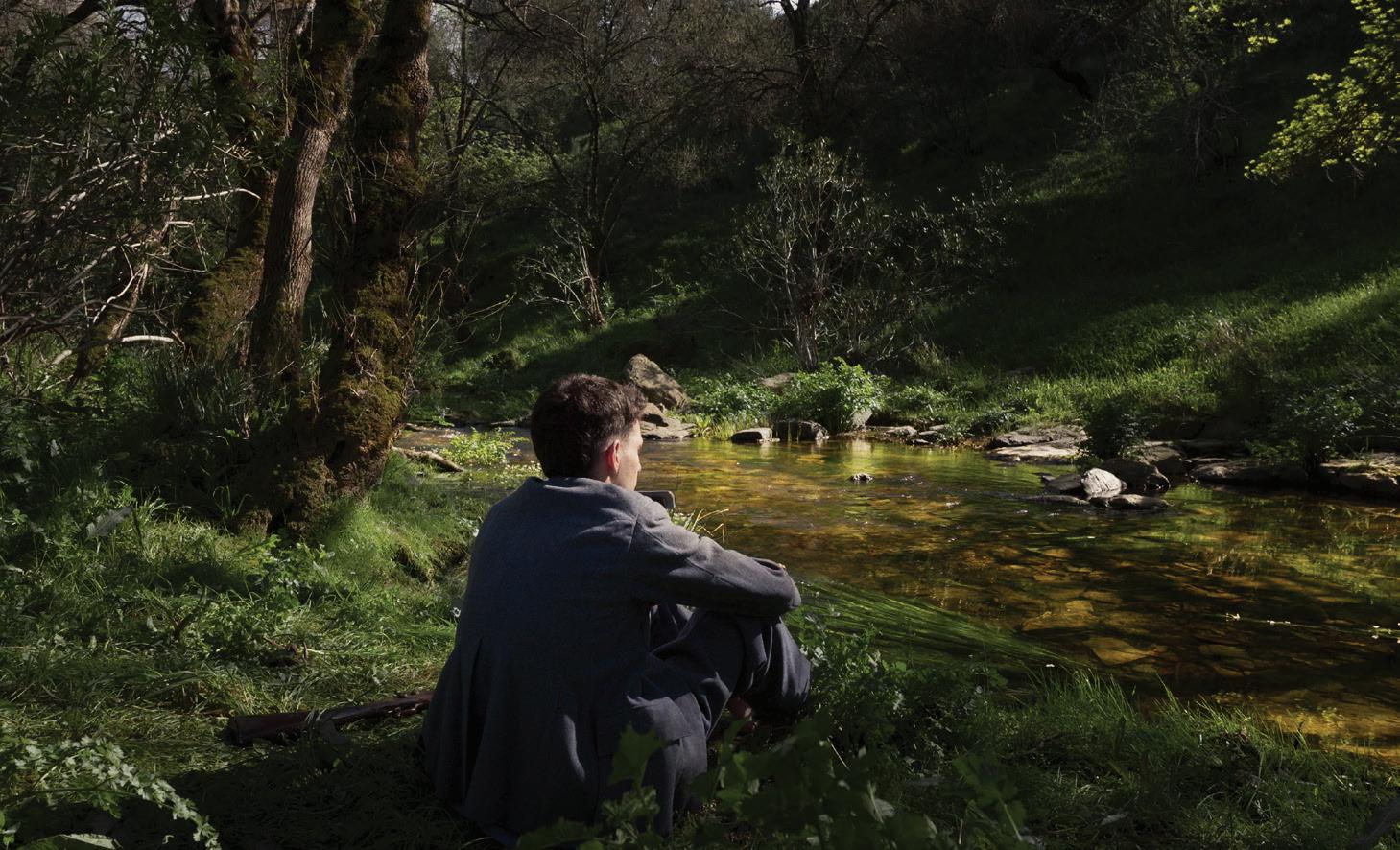
is relative. Here, we get a fairly conventionally-staged series of episodes following the daughter of a wealthy landowner, a couple of earthy pagan women, and two itinerant musicians.
"The point is clear that the past is never past and that the present is always the future."
But there is just as much symbolism, if not more, in Twittering Soul. And it seems more central to the overarching narrative: one of the pagan women is bitten by a snake, slowly dies, and floats into the heavens.
From the press notes, I learned that much of what’s in the film is based on Lithuanian folk tales and, indeed, much of the film has that kind of fable-like quality. This is certainly aided by the 3D, which adds a layer of unreality to the proceedings. And more often than not, Narkevicius uses it well. The extra dimension builds out what are often closed-in spaces in often clever ways, like a shot through a corridor of doorways that makes a mansion look far bigger than it likely was and recalls the Orson Welles’ famous wall of mirrors shot from Citizen Kane. Narkevicius also positions his camera high and away while his characters are low and separated, which has the effect of making people look toy-like and landscapes look endless. And he creates one of the most beautiful 3D shots I’ve seen in any film: a candle in the foreground illuminating a photo print with the eye of the character viewing the picture visible in the background through the print. That’s the kind of image 3D is made for.
The use of the technology is a cheeky counterpoint to the pastoral nature of Twittering Soul, a nod to the novelty of cinema in the time period the film is set, and a commentary on the con-
cerns about new machines and automation bearing down on society at the end of the 1800s. Some of the characters here are materialistic, others hedonistic, but all are deeply connected to the land and nature. And to folk wisdom and legends. In one scene, a maid tells her charge about the witches who circle a tree outside the window, which is followed by one of the pagan women sucking out the poison from her snake-bit companion’s leg and reciting a witch-like incantation. Later, the maid tells a story about fairies spinning flax, which cuts to a room of women spinning flax. Are the two women witches? Are those spinsters fairies? Maybe. Probably. Does it matter?
Like Fire of Wind, we’re dropped into end-of-the-century Lithuania without a map. And that’s OK. Without knowing much of anything about Lithuanian history or culture, we can experience Twittering Soul more purely, learning about the country through the film while keeping our eyes, ears, and minds open to deeper, more primal insights. Plus, there’s the novelty of seeing a Lithuanian film in 3D — in fact, the first Lithuanian feature to be shot that way. I’m not sure it needed it, but it is a singular film.
And, like Fire of Wind, Twittering Soul gets us thinking: about our place in nature, our beliefs and why we hold them, and the importance of storytelling in making sense of the world and preserving some unique, necessary part of our identity. I guess it could be said that all films are concerned with this. But there’s something about encountering other cultures in such an honest, open way that encourages empathy — and deep engagement with our world and ourselves. And, really, isn’t that what cinema is all about?
The 2024 New York Film Festival is eld from September 27, 2024 to October 14, 2024 at Lincoln Center, 165 West 65th Street.
The Anthology Film Archives is located in the East Village at 32 2nd Ave, New York, NY 10003

Who says a jazz band can’t play rock music? George Clinton didn’t quite ask that question on the 1978 Funkadelic track “Who Says a Funk Band Can’t Play Rock?” but it’s a logical implication of the various permutations of the lyric, which questioned genre divisions at a time when radio and television were still segregated, even if schools weren’t. These days, the boundaries are thankfully more fluid. Musicians are more likely to move between false divisions, or borrow from more than one at the same time.
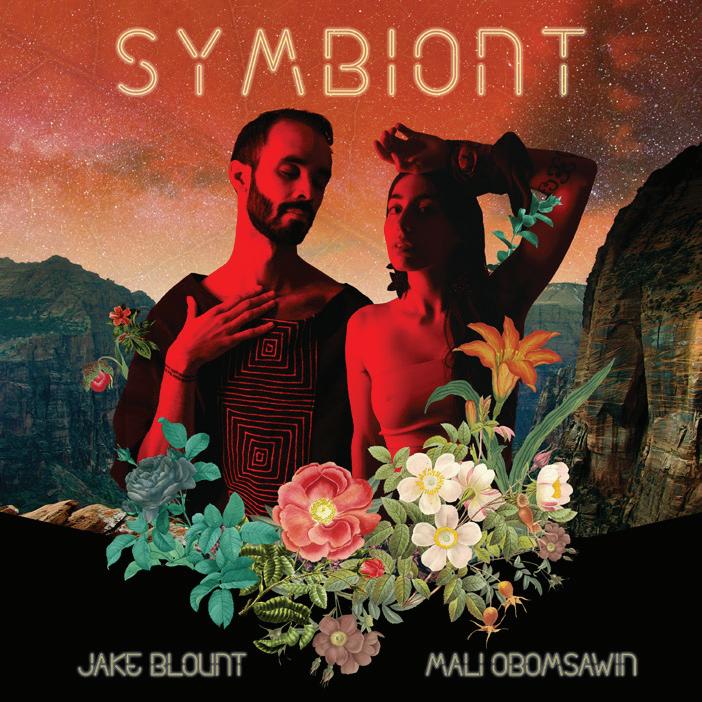
Case in point, the bassist Mali Obomsawin, whose Sweet Tooth was one of the best jazz debuts of 2022. But she’s worked at least as much as a songwriter with the trio Lula Wiles and in more esoteric efforts with guitarist Magdalena Abrego. Symbiont (CD, LP, download out last month on Smithsonian Folkways) is a set of songs with the exceptional multi-instrumentalist Jake Blount, drawing on indigenous (Obomsawin is Abenaki First Nation at Odanak) and African-American (Blount both plays and writes about the creolized music of Black Americans) sources. Whether they’re playing rock or jazz or global folk and native funk can be determined Oct. 17, when they appear at the BRIC JazzFest in downtown Brooklyn.
While Blount and Obomsawin draw inspiration from Caribbean and African folk songs, gospel and shape singing and the chants that echoed across the land before Europeans arrived, they also make use of processed beats and sampled voices, electric guitars and synthesizers to give the album a strong and insistent currency. Seated within the ancient and the contemporary sounds is the impetus of the album, a moral mirror reflecting a time when people lived more compatibly with the planet. Maybe it’s looking forward to such a time as well. That remains to be seen.
Guitarist Wendy Eisenberg may be no more firmly encamped in the jazz
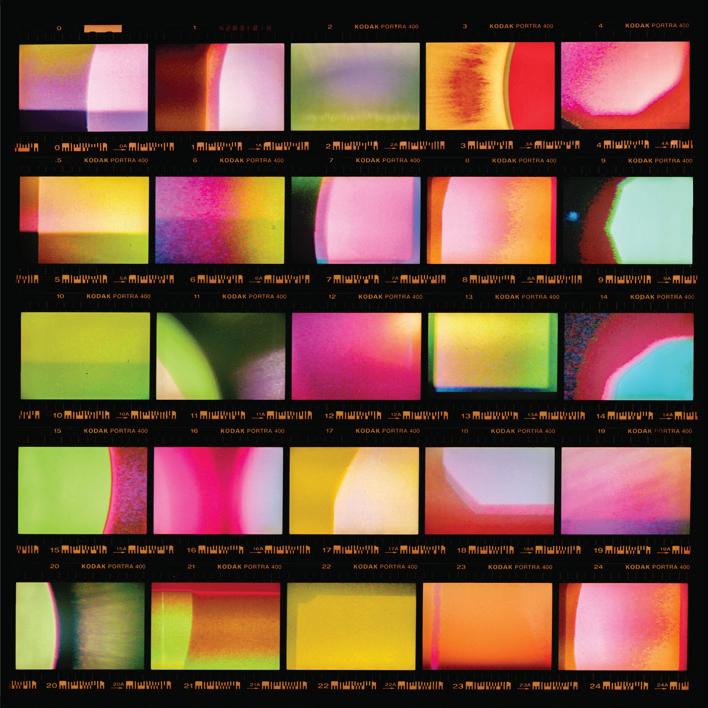
world, but can certainly be found in various houses of improv around town. On the other hand, earlier this year they released a brief little 12” of compositions for solo electric guitar by New York School composers Morton Feldman and Christian Wolff, so calling genre is anyone’s game. On the other other hand, Eisenberg’s new Viewfinder (LP and download out last month from American Dreams) is a set of odd and infectious songs inspired by the world coming into focus after getting Lasik surgery in 2021. In fact, the first track and lead single is titled simply “Lasik,” and came with a video of blurry colors to match. It’s a very direct song, a literal description of coming out of the surgery with the chilling tagline “changing isn’t healing.” But while the lyrics are straightforward, the music is off kilter and dizzying—piano, bass, drums, trombone and Eisenberg’s guitar all stumbling, off balance but moving in the same general direction. It’s fantastically literal. The eight other tracks cohere a bit more, with long, light melody lines and counter-melodies that sometimes veer toward the jazzy but are always catchy and steady. There’s a lot of great playing, but against layered vocals and stacked instrumental lines, it’s drummer Booker Stardrum who keeps them laser focused.

in Paradise (for Hal Willner) (LP, download out Oct. 18 from Shimmy-Disc): 13 (of course) settings of Edgar Allen Poe verses made
with a cavalcade of voice artists. The album is produced and for the most part played by the mono-named Kramer, whose past credits include Shockabilly, Bongwater, and stints in Butthole Surfers, Half Japanese and Ween, as well as launching NYC proto indie-label Shimmy-Disc back in 1987. After a long hiatus, he rebooted the label in 2020. This century’s Shimmy has been a bit more ethereal, a bit less manic than the days of yore, and indeed To One in Paradise is more somber, nearly miserable, than it is scary, befitting much of the master of macabre’s finest verses. The titular dedicatee is the master of the tribute album. Willner produced fine albums of the work of Thelonious Monk, Nino Rota, Kurt Weill and others, overseeing all aspects of production. Kramer follows suit, employing the voices of Jennifer Charles, Joan As Police Woman, Lydia Lunch, Eric Mingus, Thurston and Eva Moore, Anne Waldman, Chloe Webb and others into a lonesome and dismal sonic portrait. The album concludes with a voice from beyond the grave in the form of an archival recording of Allen Ginsberg (1926-1977) reading “The Bells,” which was only published after Poe’s death in 1849. Lou Reed (1942-1913) recorded his own take on “The Bells” in 1979, 24 years before working on a full album based on Poe’s work with Willner (1956-2020). The spirits are all around us. You don’t need poetry and song to connect with them, but it doesn’t hurt.

Retro Yé-yé with a Turkish twist. I first heard the British duo Kit Lambert on the 2021 David Bowie tribute album Modern Love. Their take on his 1973 song “Lady Grinning Soul” was a standout on the album, both faithful and radically reinterpreted, reminding me of ‘90s atmospheric electropop from the likes of Portishead and Hooverphonic. They’d already been around for at least a couple of years by that point, but I didn’t pick up the lead until the EP New Internationale (CD, LP, cassette and download out last month from Brainfeeder) crossed my digital desk. It’s a mere 24 minutes, and about
a third of that is radio edits of three of the four songs. But it’s wonderful fun. The songs play up Istanbul-born singer Merve Erdem’s heritage but more than that set a Euro-cosmo scene of Swingin’ London. The other half of the band is multi-instrumentalist Kit Martin, who has just the right twang in his guitar and just the right stride in his step to strut and stroll across countries and decades and into your earbuds.
(continued from page 1) your time, something like, “This is the age of……what?
Armin- Good question. The Boomers had connections to momentous events that were mostly positive, and that’s where they got their sense of moral authority. The war, the period of great American creativity lasted until you hit the eighties. What do we have that compares? It’s a question that screams in the back of my mind when I’m writing about arts and culture. Is music getting worse? Is film getting worse? Are we just not as good at making rock albums as people in the ‘60s and ’70s? And wouldn’t it be strange if all the great rock music was made in the first 15 years of its existence? So there is the question, what is ours, what unique cultural products do we have to compete? I would say TYLER THE CREATOR’S last few albums come to mind, he’s emblematic of his generation and brilliant. A couple of movies too: UNDER THE SILVER LAKE, VOX LUX , and of course every DEERHUNTER Album.
R.J.- IMHO these bands and movies you cite here might be incredible and life changing but, when the Beatles appeared on the Ed Sullivan show the entire country was tuned in. Look, there were only 5 stations to choose from at the time, not the thousands available today. Tyler the creator, amazing as he might be, only gets a small sliver of the public mind. (Authors note: I checked out tyler on my phone post-interview and his sound is new and great.). BTW Armin, I see you’re wearing a Bob Dylan T-shirt.
Armin- (without looking down). Yes, yes I am.
“Fishes, Purple,Tiny…a “60s tale” is a somewhat anthropological snapshot of a time before the digital revolution of computers and cell phones. Today’s reader may find it hard to imagine a world with only 5 tv channels, milk deliveries, and neighbors whom you knew. People of this era would never walk while they drank coffee, they would sit with a cup during what was called a “coffee break”. There was little warning when the 1950s, a conservative post war decade, collided with the “peace and love 1960s.” Many, especially those coming of age at that time were caught in the turbulent zeitgeist. Zak Wozny was one of them.
Zak Wozny spent his first 17 years on a 20 block patch of working-class streets in a Brooklyn neighborhood called Sunset Park, named for the large park in the middle of it. He was a little kid in the 1950’s and a teenager in the sixties. Had eight years of Sisters of St. Joseph at St. Michaels grammar school on Fourth Avenue, followed by four years of black robed Franciscan Brothers, at Bishop Ford High School, which was up the hill next to Green-wood Cemetery. There wasn’t much different between the two except that if you weren’t ready for it, a brother’s slap in the face could land you on the floor. The nuns used rulers and humiliation to keep kids in line.
When Zak was scheduled to graduate high school, the last thing he wanted to do was sign up for another four years of college. He was gonna hang out, smoke pot, listen to all the great music that was happening. The Beatles were still together, the Doors were on AM radio! However, hovering over the class of ’69 was the draft, and the scourge of Vietnam. Most of Zak’s classmates wound up going to Brooklyn College – it was cheap, easy to get into – and kept you from being drafted. Zak put off any post-high school plans, just didn’t want to think about it.
That changed one day in April. He was standing on his stoop at 451 40th Street, when he saw a ragged looking figure coming up the block from Fourth Avenue. It turned out to be a local guy, Joey Riccardi, who was about four years older.
He didn’t look good, nothing like the muscled greaser type Zak remembered.
“Hey Woz… I thought that was you.”
“Hey Joey.”
“How you doing, Woz?”
Before Zak could answer, Joey continued.
“yeah man… ya know… fuck… I’m livin’ down there now.” He pointed down the block towards the Gowanus Expressway.
“Under the highway… fuck.”
Joey paused to rub his face.
“My parents threw me out… you dig that! Threw me out… say I stole their stereo. You believe that shit… fuck.. .so how you doin’?”
“I’m…”
“Yeah, ya know, they don’t know, nobody knows what it’s like over there. Nam… the jungle, never a second to relax. Now I’m down there, with the junkies… fuckin’ animals.”
“So how you doin, Woz.”
“Uhh…”
“Listen, ya got five bucks you could spare?”
He gave Joey the seven dollars he had on him.
The next day at school, Zak Wozny went to his guidance counselor and told him he was ready to start thinking about college. With his help, Zak got into the city university system. He was too late for Brooklyn College and wound up getting admitted to Hunter College. Hunter was in Manhattan, or as the Sunset Park natives called it…
“The City.”
The summer of ’69 was a blur, not just to Zak, who was working a few parttime jobs and getting high at night with his friends, but to the whole world. Men walking on the moon, Woodstock Nation, peace and love, Mets winning the world series, and of course Vietnam. The war raged on and on, no matter what the hippies did with sit ins and protest marches.
There was a wake for Jimmy Dalton, a local kid who had been drafted earlier that year. Zak, who was friends with his younger brother Tommy, went. The coffin was closed and he stayed in the back. Didn’t stay long, didn’t get high that night. He was feeling something different, something new. What exactly was it? It took a while to figure out, but turning up 40th Street from Fourth Avenue it came to him.
It was guilt.
Early one morning in September, Zak caught the N train at the 36th Street BMT station. Took it one express stop to Pacific Street, walked through a series of crowded tunnels to connect with the IRT express, which took him to the “City,” the upper east side of Manhattan.
On registration day, Zak wandered around the Hunter College auditorium signing up for 101’s at random: English, German, Geography and one class which he thought from the description was creative writing, but turned out to be “English as a second language.”
This was the first time in a school setting that he didn’t know ANYONE. He felt strange being out of the little village of Sunset Park. It was a drag, a real drag, and he had to be there by 8 am every morning.
The alarm clock his mother bought him would go off at 6:30 with a grinding screech, and since the ‘snooze’ button hadn’t been invented yet, he had to get up right then, cross the room, and shut it off. Coffee, buttered roll, N train to the 4 Train… “Better than ‘Nam’ everybody told him when he’d complain, but to Zak it felt like a slow death. Geography 101, at 1 pm was his last class of the day and the most tiresome of all. Professor Miller would talk for fifty minutes, sometimes using a pointer on a map, explaining the importance of geographic formations
on world events and culture. Usually Zak would doze off during these presentations. But not on this day in his second week at Hunter. On this day he decided that the tab of synthetic mescaline in his little jeans pocket, which he was saving for the evening hangout would be swallowed, Now. With a sip from the hallway fountain just before class this was done.
Within 15 minutes, Geography 101 became the most mind-blowing, fascinating fount of knowledge and understanding he had ever experienced. Mr. Miller was laying out foundations of universal constructs, illuminations, terrestrial epiphanies.
Zak, who up until now had never uttered a word in class, raised his hand.
Mr. Miller scanned the attendance sheet for his name. “yes Mr…”
“Wozny, Zak Wozny.”
“Yes, Mr. Wozny.”
“Is it possible that a mountain range separating two valleys, could, over time, create an evolutionary effect upon the developing species that would…”
He went on for a while in a mescaline infused rant, at the end of which Mr. Miller replied:
“Possibly…”
Mercifully for all concerned, the bell rang and the class, mostly kids Zak’s age in jeans and tee-shirts, filed out quickly. Zak, by now stoned, was moving slowly. As he rose to leave, a woman approached him.
“Mr. Wozny,” she began, extending her hand. “I’m Susan Kemp.”
A mescaline-induced pause later, he shook it and said hello.
“I just wanted to tell you how much I enjoyed your observation in class today.”
He could only stare, she was so very different from the jeans-and-tee-shirt girls he was used to. She wore a pink skirt and blouse, a matching hat, and kept talking about geography. Zak didn’t do much more than nod and notice that she was wearing high heels and stockings and was pretty, with perfectly straight light brown hair.
“Would you like to get some coffee?” she said after a while.
Zak Wozny and Susan Kemp walked one block west to a Chock Full of Nuts on Madison and 69th.
“May I call you Zak?” Her English was crisp, like the people on television newscasts.
“Sure… that’s my name.”
Zak wasn’t intending to be funny, but she laughed. “Please, call me Susan… that’s my name.” And she laughed a little more.
They sat at the counter. Susan ordered coffee. At this stage of his mescaline high Zak felt no hunger, he could barely feel his body. The fluorescent lights in the restaurant seemed shockingly bright and gave the chewing diners sitting across from him a greenish pallor.
The uniformed waiter stood, slightly annoyed, until Zak, realizing he had
to order something, said “A glass of milk, please.”
“And a whole wheat doughnut,” Susan added. “You’ll like it.”
Zak nodded.
The waiter served Miss Kemp a mug of coffee and placed an empty tall glass in front of Zak. He touched the glass and it was warm, almost hot, having just come out of the dishwasher. The waiter returned with a doughnut and a metal pitcher of cold milk. He then filled the glass, which instantly exploded with a high-pitched cracking sound.
Milk and shards of glass were sent flying in all directions. “My dress – my dress!” Miss Kemp began shrieking. Zak, being high, fell into wide eyed laughter
The manager came over to apologize and assured them there would be no charge.
“No charge?!” screamed Miss Kemp. “What do you usually charge to cover someone in milk and broken glass?!!” And then to Zak, “I have to change. Come with me; I’m just down on Park and 68th.”
As they headed east, Zak picked small pieces of glass out of his tie-dye tee shirt. It’s different up here than in Brooklyn, he thought to himself. They came to one of the tall grey buildings on Park Avenue. As they approached the metal grilled door, it was opened for them by a small, middleaged man in a military outfit, complete with a brimmed cap and trousers with red stripes running down the legs.
“Good afternoon, Miss Kemp!” he greeted her. To Zak, he directed a dirty look.
“Hello Harry – this way, Zak.” She led him down a dim, wood-paneled hallway to an ancient-looking elevator operated by another small man in military garb. He also greeted Miss Kemp with a “good afternoon” and Zak with a dirty look. He pulled shut a shiny brass grilled door, turned a wood handled crank, and took them swiftly up to the eleventh floor.
Zak followed Miss Kemp down a silent, plush-carpeted hallway, past faded landscape paintings, to 11 J. While Miss Kemp went to change, he stood in the parlor looking out at the East River. Mescaline high or not, this was an amazing view. Zak had only seen Manhattan, with its glimmering towers shining in the distance, from the top of Sunset Park. Now he was in one of those towers.
“I don’t have much to offer you,” she called out from the bedroom. “My parents are in Europe, and I usually eat out.”
Bob Racioppo is a founding member of the Shirts, a New York-based American punk band that formed in 1975. In addition to music, Robert is an accomplished fine artist. This is his first novel. He is a Brooklynite, grew up in Sunset Park and now lives in Windsor Terrace. To order a copy of the full book text 917 652-9128.
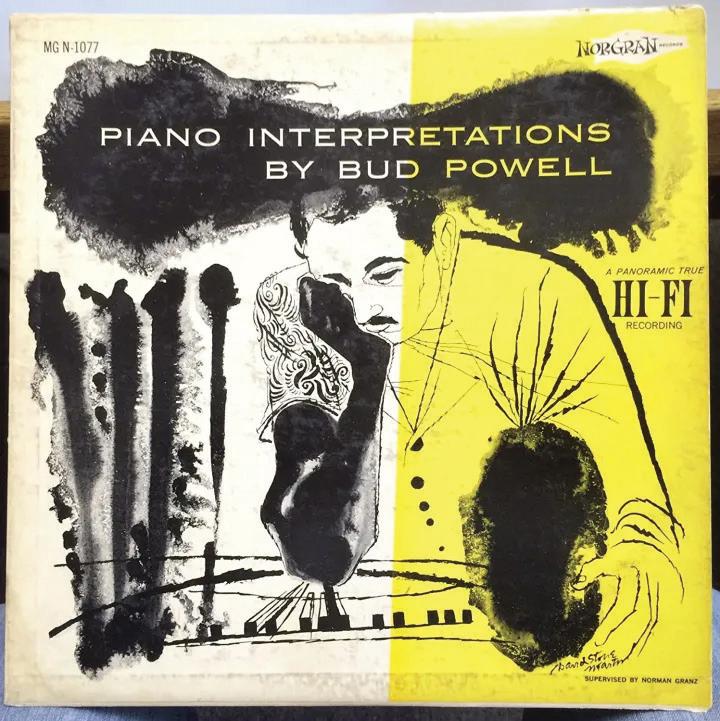
by George Grella
By the time you read this, Bud Powell’s 100th birthday (September 27) will have passed, with a 24-hour broadcast from WKCR and a 25% discount promotion from Blue Note records on the two Powell LPs on their label currently in print. So after blowing out the candles, let’s take a look at how that is a tragedy.
Powell was the first and greatest bebop pianist. He was overshadowed by his contemporary Thelonious Monk, who was promoted as the “High Priest of Bebop” even though he wasn’t a bop player. Monk was the Stravinsky of jazz piano, not only reviving stride and swing through a modernist sensibility, but using rhythm and meter as the foundation of his composing, getting endless mileage out of taking simple, discrete ideas and shifting them around through time. Powell on the other hand was an absolute bopper, his right hand spinning out twisting, self-perpetuating lines like those of a horn player, adding the melodic curlicues and rhythmic accents that were essential to the bop vernacular that Charlie Parker and Dizzy Gillespie created. Powell was in and of the idiom. Like those two, he revolutionized ideas they all had picked up from the great swing musicians.
Even though he’s the pianist on the Parker-Gillespie Jazz at Massey Hall album, famously called the “greatest jazz concert ever,” Powell has run a distant second to Monk in the public mind. Among musicians, his stature and influence have always been prominent (and not just in jazz; the great French classical pianist Samson François was a huge Powell fan, and you can hear that influence in the way François played Chopin, with a lean manner that emphasized the top lines in the music), but Powell has never been more than a marginal figure for the greater jazz public. That his albums have not been consistently in print is a huge part of that, and is a tragedy that compounds that of Powell’s own life. He died in 1966 at the age of 41, having endured decades of severe mental illness with roots in a serious beating at the hands of the police and compounded by electroconvulsive therapy (Bertrand Tavernier’s 1986 film Round Midnight, starring tenor saxophonist Dexter Gordon, was based in large part on Powell’s life as an expatriate in France).
The one Powell album to have if you can have only one is Bud Plays Bird, a piano trio date with bassist George Duvivier and drummer Art Taylor. Recorded across late 1957 and early 1958, Powell runs through tunes like “Yardbird Suite,” “Ornithology,” and “Moose the Mooche” with high spirits, intelligence, elegance, and plenty of fire. But don’t look for it; the tapes sat in a vault until discovered by Michael
Cuscuna and released on CD by Blue Note in 1997, whereafter it was left to go out of print.
Currently in print are The Amazing Bud Powell Vol 1 and Time Waits, both on Blue Note. The invaluable CD collections The Complete Blue Note and Roost Recordings and The Complete Bud Powell on Verve, which between them have his greatest sessions (except for Bud Plays Bird which came out the year after the Blue Note collection was released)—the latter with his fantastic solo album Bud Powell’s Moods (also issued as The Genius of Bud Powell)—are out of print and have
"The tragedy of Powell’s life is compounded by the tragic indifference of the record companies to his musical legacy."
been for decades.
To be absolutely specific, the albums on these collections can be found in cheap knock-off sets from Europe, where they are no longer under copyright and can be reissued by anyone who wants to produce them. So the music is out on the general market, but keep in mind that labels like Chrome Dreams and Reel to Reel do not have the original tapes, these are copied off of previous reissues, likely ripped and repackaged CDs. Caveat emptor.
Does Bud live? If an artist has no records available to be heard, does he make a sound? The tragedy of Powell’s life is compounded by the tragic indifference of the record companies to his musical legacy, which is one of the greatest and most important in the history of jazz, itself one of the greatest and most important facets of American culture. Jazz is neither owned nor controlled by the musicians, though, in this case it’s in the hands of the capitalists who run the Universal Music Group, which owns both Blue Note and Verve, and UMG is not even an American corporation. American aesthetic culture—music, literature, painting—is subservient to American social culture, which is organized around worship of the almighty dollar, this is the fundamental divide. For writing, the fine arts, even film, there are institutions that ameliorate
this and preserve the things that will matter more in hundreds of years than who was the richest person at any given time. Why can’t we have the same thing for jazz?
The model I look to is the Library of America, a nonprofit publisher that keeps important American writing in print. Their catalogue is constantly expanding, and it stretches from the 17th to the 21st century. The editions are carefully edited and authoritative, printed on acid-free paper so they last, and most importantly once they are in print they remain in print. That’s the point, to preserve American literary culture, from early poetry to Herman Melville, Jane Bowles to Albert Murray, Henry James to Don DeLillo. DeLillo is an example of how Library of America works. In two volumes, they’ve republished The Names, White Noise, Libra, Mao II, and Underworld, even as each of these remains currently in print from their for-profit publishers. This is a living author, still writing, still selling books; eventually his publishers (Vintage, Penguin, and Scribner) will stop selling the books, at least temporarily, but they will never go out of print or be unavailable.
If this is possible with a living writer, conceptually it is possible with the catalogues of dead jazz musicians. And it should be possible. DeLillo is indisputably important to American culture, and so is Powell (and Monk and Parker and Gillespie, and how about Duke Ellington and his complete RCA Victor recordings, another collection that has disappeared?). There’s a lot of lip service that comes out of prestigious American institutions like Lincoln Center and PBS about how jazz is essential to America. The idea is right, but it doesn’t appear to be true, because jazz has been left in the hands of giant corporations like UMG where profit and loss are the only things that matter in the end.
Jazz needs this, but jazz also deserves it. Bud Powell deserves it, and people who listen to and care about jazz deserve to be able to hear him (and no, Spotify is not a reasonable option because it exists to enrich executives and there’s no guarantee the music will always be available). For something as important and also economically marginal as jazz, the non-profit music library is the ideal institution, a place that preserves one of the most important parts of America and keeps it available, in perpetuity, for everyone. Surely, we can do this.


